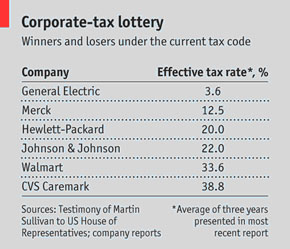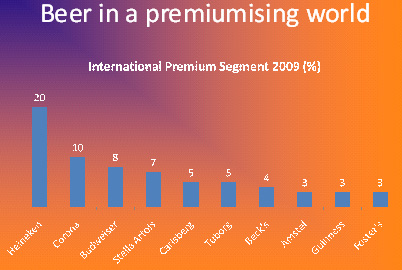You have to give it to AB-InBev: they are reassuringly predictable. If they spot a category that’s growing, they will have a product for it in no time. Viz Stella Artois Cidre. Not a cider, but a cidre. Already in February 2011 the brewer of Stella Artois beer unveiled Cidre, a “premium, crisp and refreshing” attempt to cash in on booming sales of the drink. Supported by a “double-digit” million-pound marketing spend Cidre hit the supermarket shelves at Easter. A premium Belgian cider allegedly made from apples fresh from the orchard, fermented in Belgium and imported to the UK, Stella Artois Cidre has a crisp and refreshing taste at 4.5 percent abv. The cidre is available in 568 ml bottles and 440 ml cans and since May it is sold in the on-trade too, although not in draught form.
It may be the dawn of a new era at SABMiller with SABMiller’s Chief Financial Officer Malcolm Wyman retiring at the end of August to be replaced by internal candidate James Wilson, 51, who currently works as finance director at SABMiller Europe. Not only does the personnel change announced on 4 May 2011 throw the spotlight on when Chief Executive Graham Mackay decides to retire. The London Financial Times says that that Mr Mackay, 61, is widely expected to retire in the next year or two.
Many raised an eyebrow when AB-InBev reported its first quarter 2011 figures. While in the U.S. the world’s number one brewer lost about one million hl in beer output compared to the same quarter last year, beer sales in Western Europe were up 0.4 percent. In Germany, sales rose almost one percent.
Now that Carlsberg’s exit from the German market seems imminent – the Danes are rumoured to be in finishing talks with Radeberger Group over the sale of their Holsten unit – it’s time to ponder Carlsberg’s motives for entering and leaving.
Each time us lesser mortals receive our annual tax statements and can see for ourselves how many of our hard-earned dollars or euros end up in the taxman’s grubby hands, who does not feel like going over to the taxman’s office and turning Viking? You know: burn, ransack and pillage.
Huhu, so Russia’s legislators are thinking of banning the sale of beer in plastic bottles from January 2013. Could this ban hurt brewers’ sales? You bet it will. Russian brewers sell nearly half their beer – over 45 million hl – in plastic bottles, it was reported. Should brewers have seen this coming? Of course. Selling beer in multi-litre plastic bottles has always been risky, if not to say insidiously obscene. Beer is not a soft drink. Hence it should not be packaged like one.
On the beer front, the Czech Republic seems to be in a stalemate. No news in public about Budvar and any eventual privatisation. Or about Staropramen and how it is faring under the private equity regime of StarBev. Instead, there are worrying signs that the Czech beer export boom is over.
How to drag the UK economy out of the doldrums? Easy. Export more whisky. 2010 was a record year for Scotch whisky exports with global shipments rising by 10 percent to reach a value of GBP 3.45 billion (EUR 3.8 billion), according to figures published by The Scotch Whisky Association (SWA). The performance confirmed Scotch whisky as one of the UK’s top exporting industries. Scotch whisky exports have increased by 60 percent since the turn of the century, adding an extra GBP 1.29 billion in value (EUR 1.4 billion).
Poor souls. Having endured one restructuring after another, the recent rumour that Danish brewer Carlsberg will sell its local subsidiary will do little to put the minds of its German employees to rest. Carlsberg’s German unit Holsten (together with the Lübz brewery) continues to be churned through the rumour mill. About 18 months ago competitors alleged Carlsberg would close down its Holsten brewery in Hamburg and relocate production to Lübz. In March 2011, the German trade publication Inside speculated that Carlsberg Germany could be sold lock, stock and barrel to Radeberger Group. The privately-owned Radeberger Group happens to be Germany’s number one brewer and a few years ago was said to be in talks to acquire AB-InBev’s German unit.
Wars have started on less. Remember La guerra del fútbol, the four-day war fought by El Salvador and Honduras in 1969 over lost football matches? Should Russia’s Ministry of Finance push ahead with plans to quadruple the price of a half-litre bottle of vodka to over 400 roubles (EUR 10) by 2012 from less than 100 roubles (EUR 2.50) today, there will be a revolution Russia-style: everybody will be heading for their dachas, firing up illegal stills and producing moonshine.



